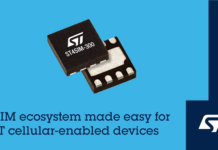
Processing comes from a Broadcom BCM2837, running with 1Gbyte of LPDDR2 RAM and optional 4Gbyte eMMC flash storage.
Processing performance compared with the original Compute Module, according to Raspbarry Pi’s Eben Upton, is around 10x faster. Compared with educational Raspberry Pis, Compute Modules have more IO: ~50 compared with ~30 lines.

There are two versions:
Raspberry Pi 3 Compute Module (CM3) with on-board flash ($30)
Raspberry Pi 3 Compute Module Lite (CM3L) without on-board flash ($25)
Pin-out is identical to the original Compute Module (CM1), although some originally un-used pins have been allocated to the external flash interface which allows the application PCB into which the CM3L clips to carry an eMMC device or SD card socket.
Power consumption is 4W max, for which thermal guidance is available.
Physically, the only difference between the original CM and CM3 or CM3L is that the new boards are 1mm deeper.
Raspberry Pi Compute Module IO Board 535To get people up-and-running, there is a develeopment kit that includes the open-source ‘Compute Module IO Board’ which brings out all of the IO connectivity of CM1, CM3 or CM3L to pin headers and flexi-connectors.
Being open-sourced, the IO board can be used as the basis for customer designs.
NEC is one organisation that has adopted the Raspberry Pi Compute Module, which clips inside some of its large format high-intensity displays aimed at public spaces – schools, offices, shops and railway stations, for example.
According to Rob Maycroft, Raspberry Pi product manager at RS Components, 80% of customers designing products with application processors are opting to buy-in a processing module of some sort, and designing a simple few-layer PCB to go with it – avoiding the complexity of designing the high-speed high-layer-count PCB needed to interface separate processor and memory chips.


















